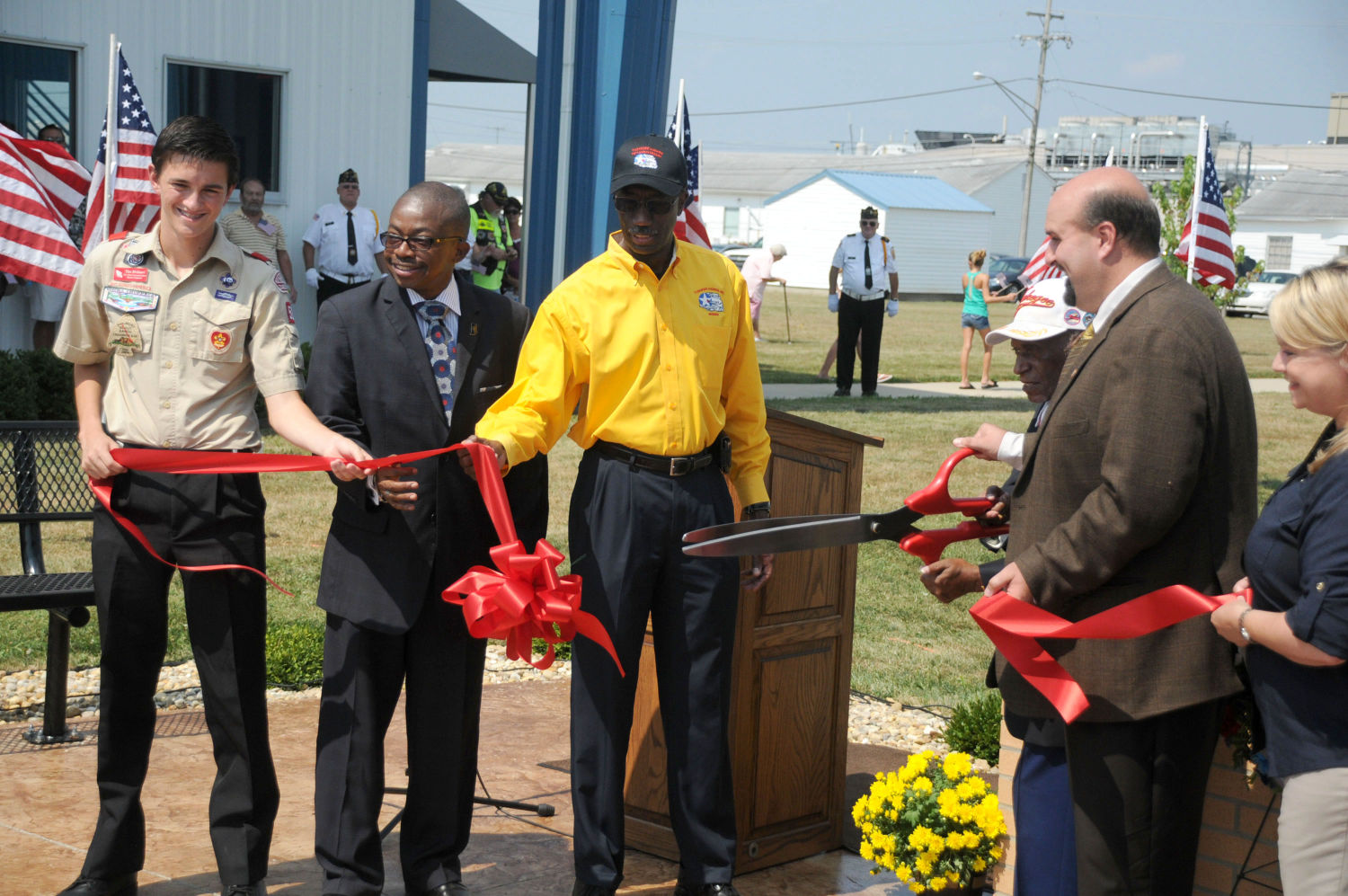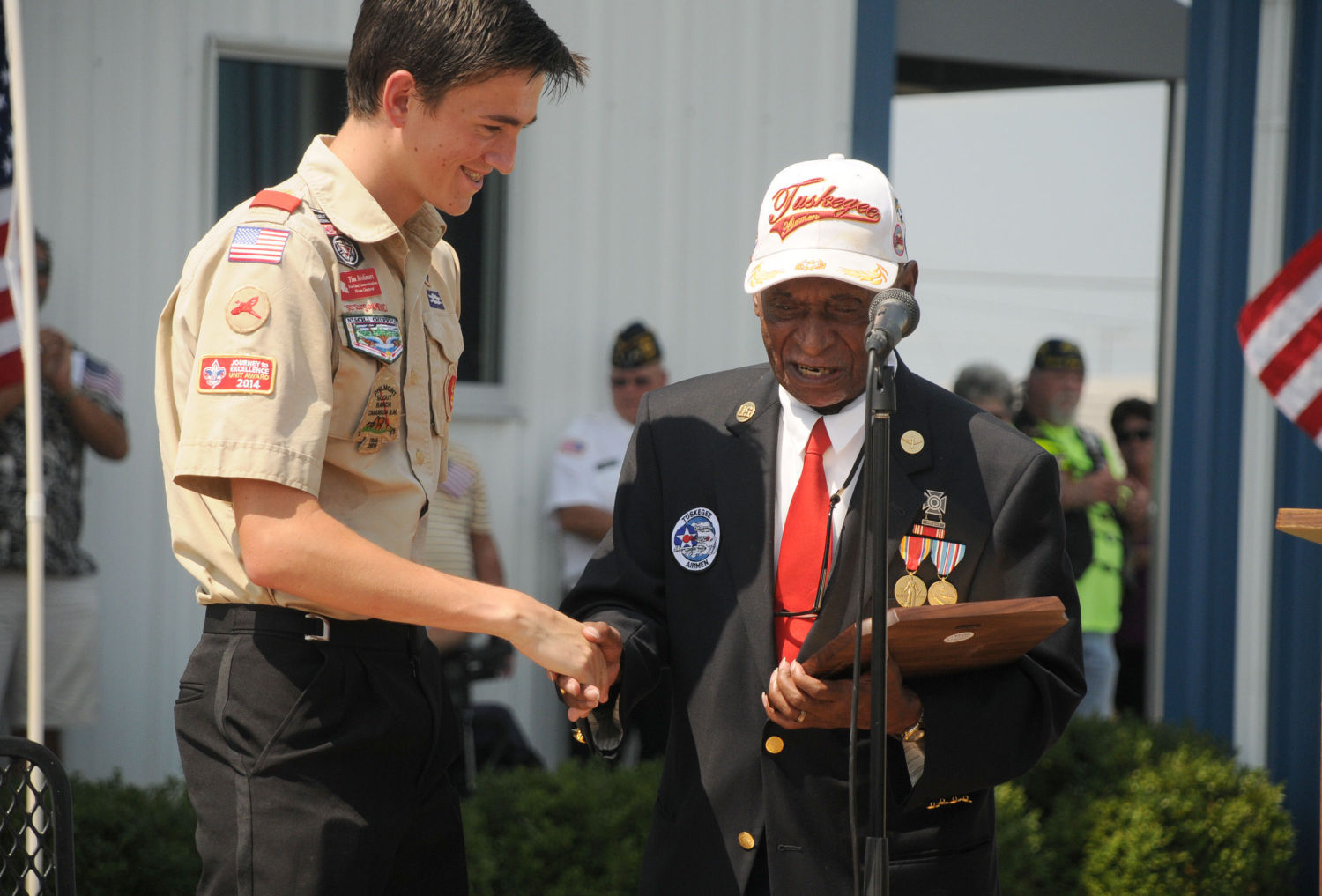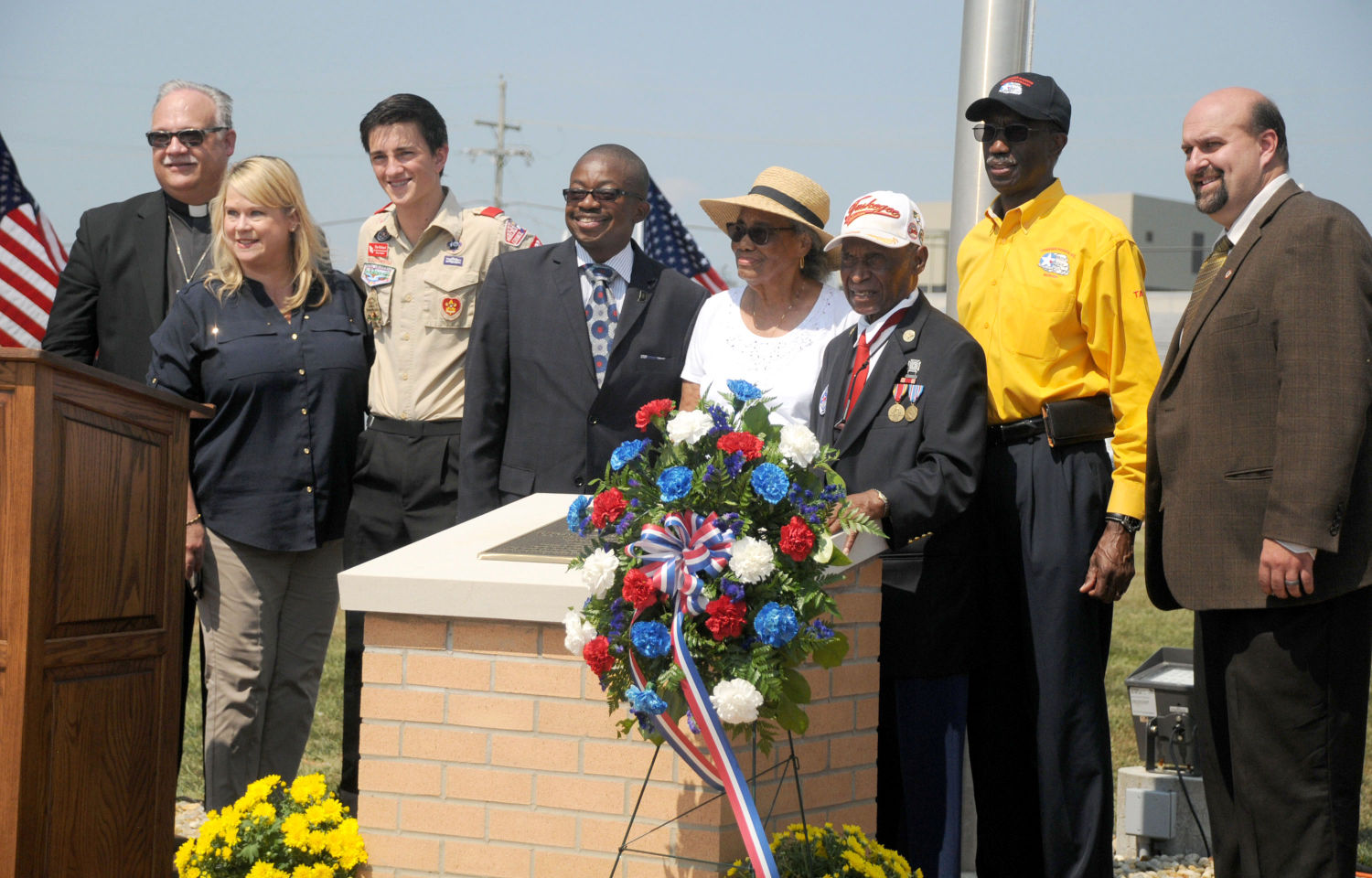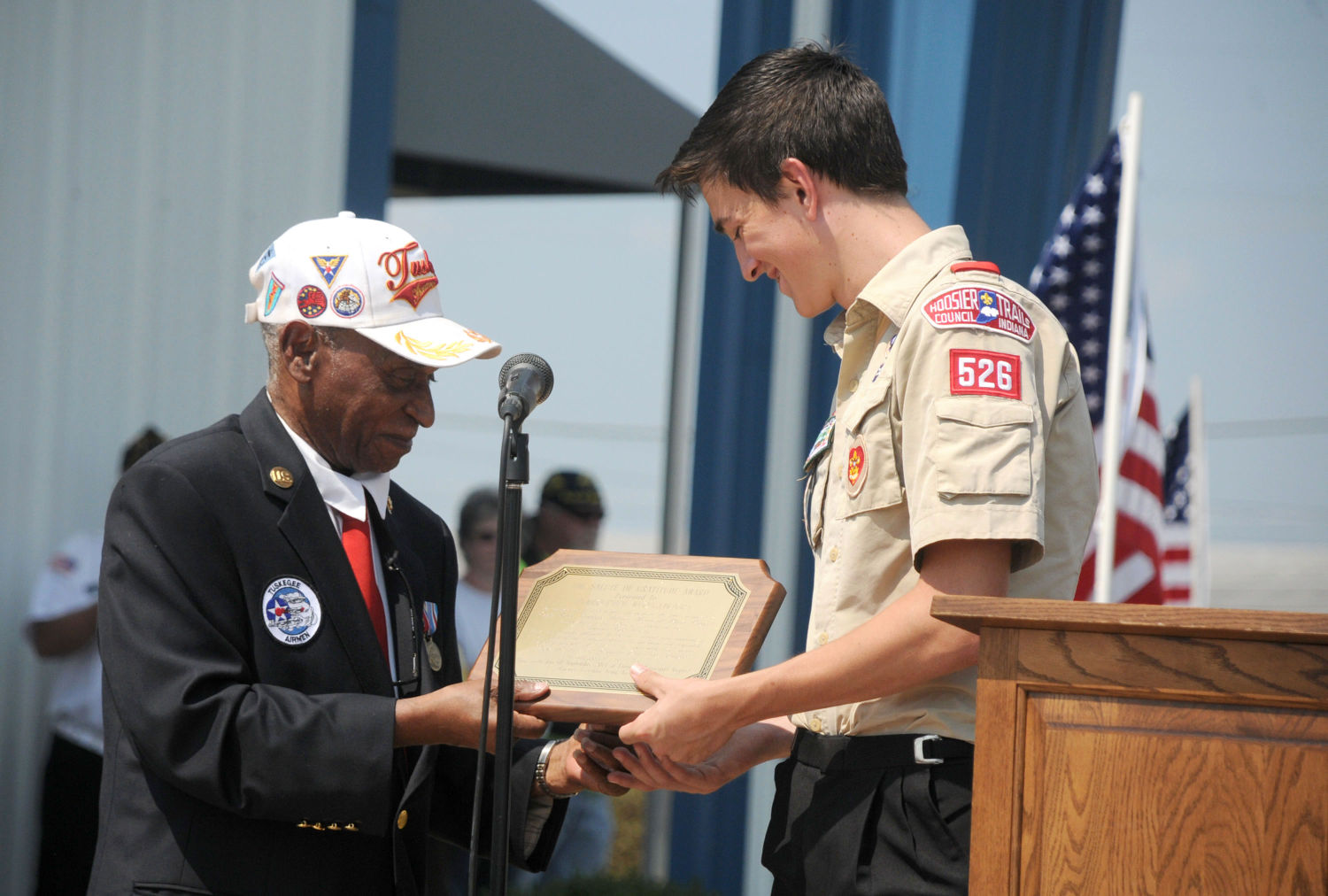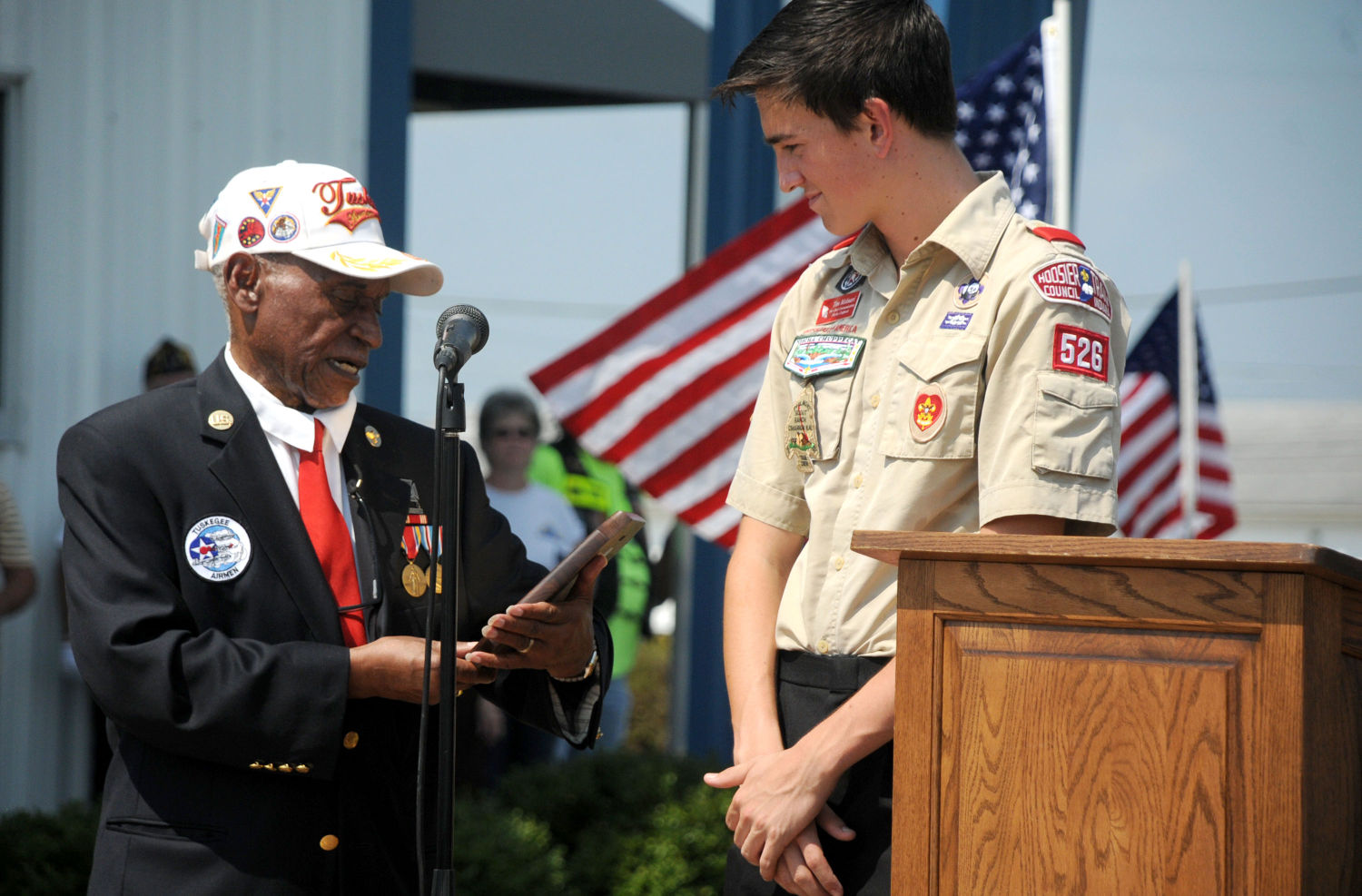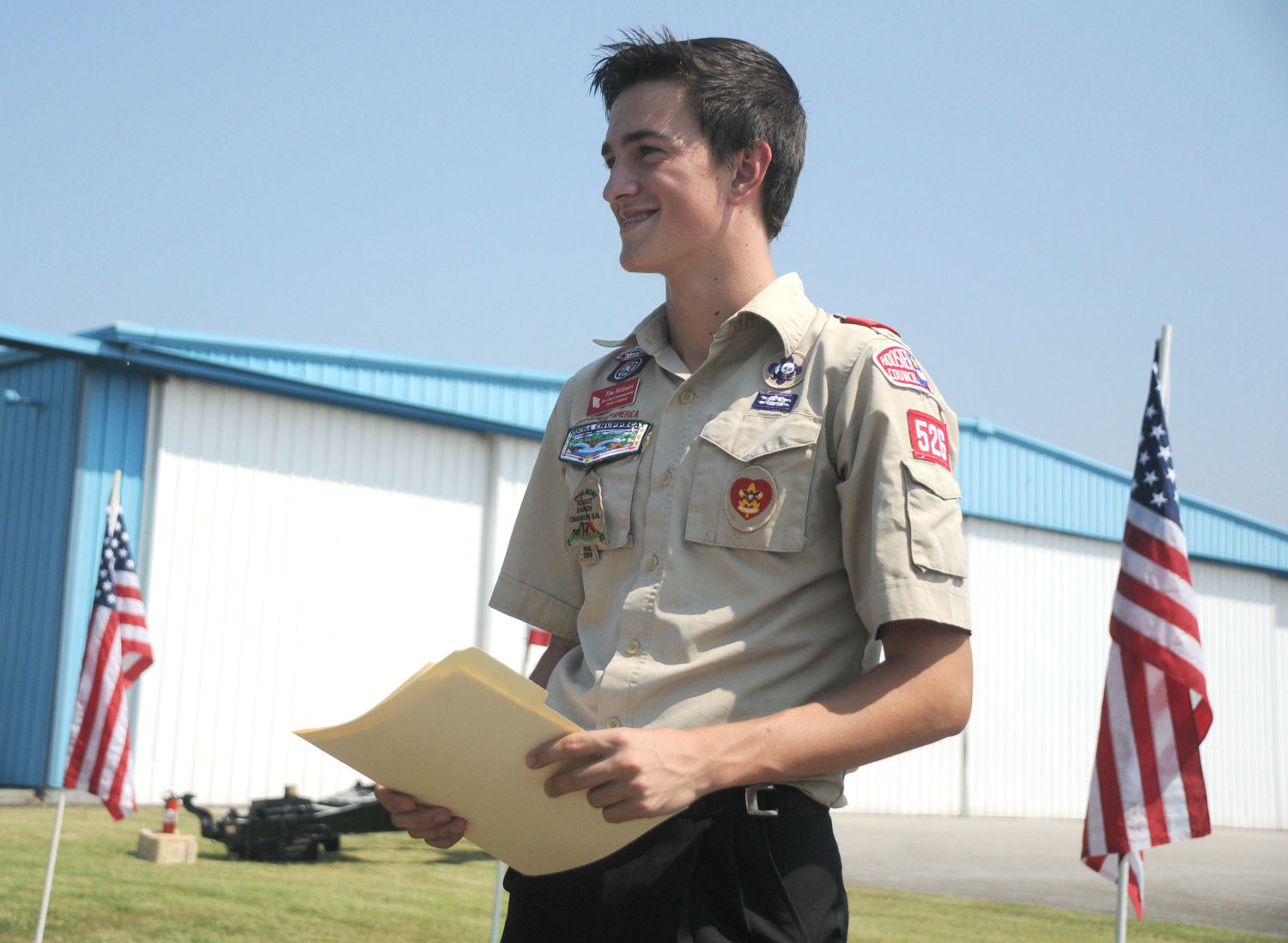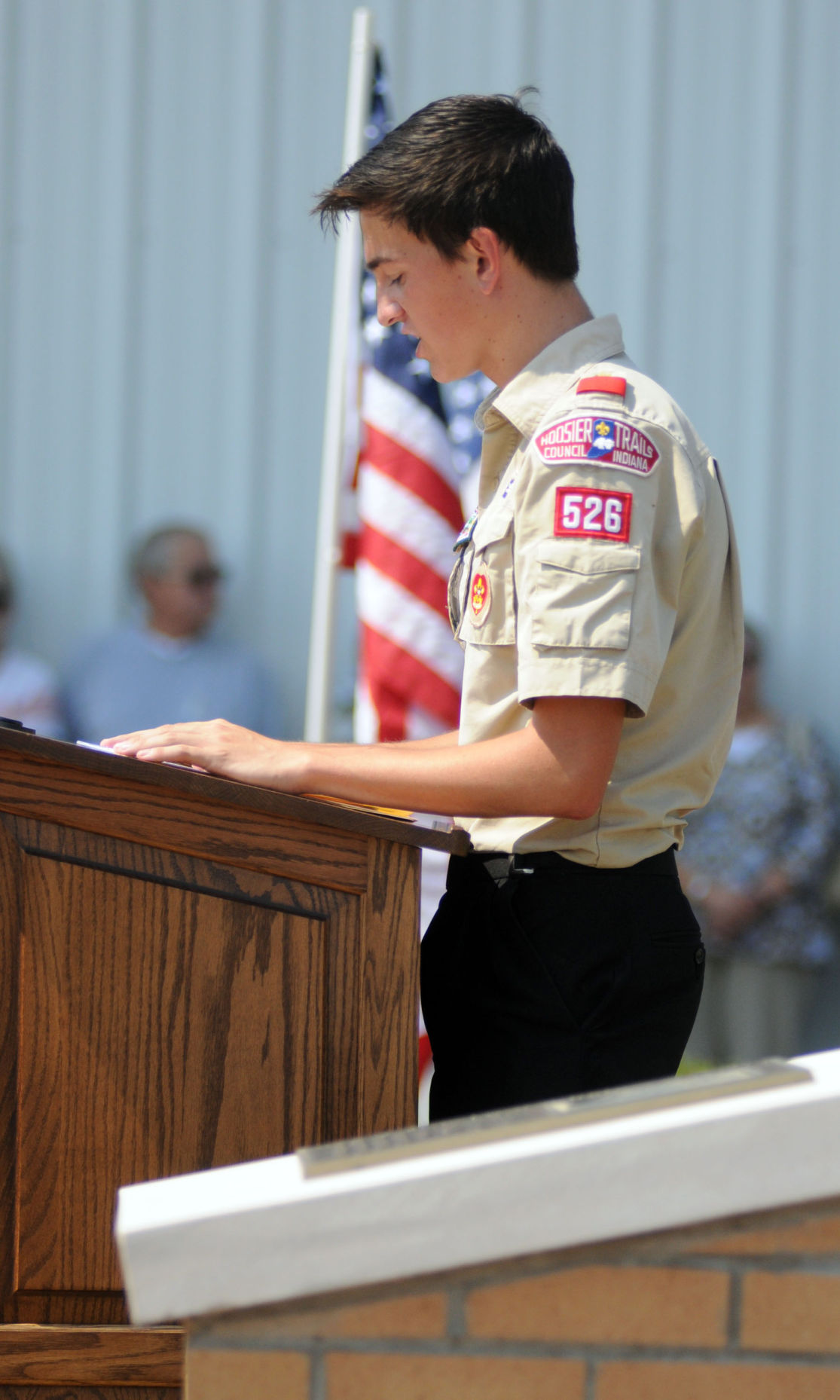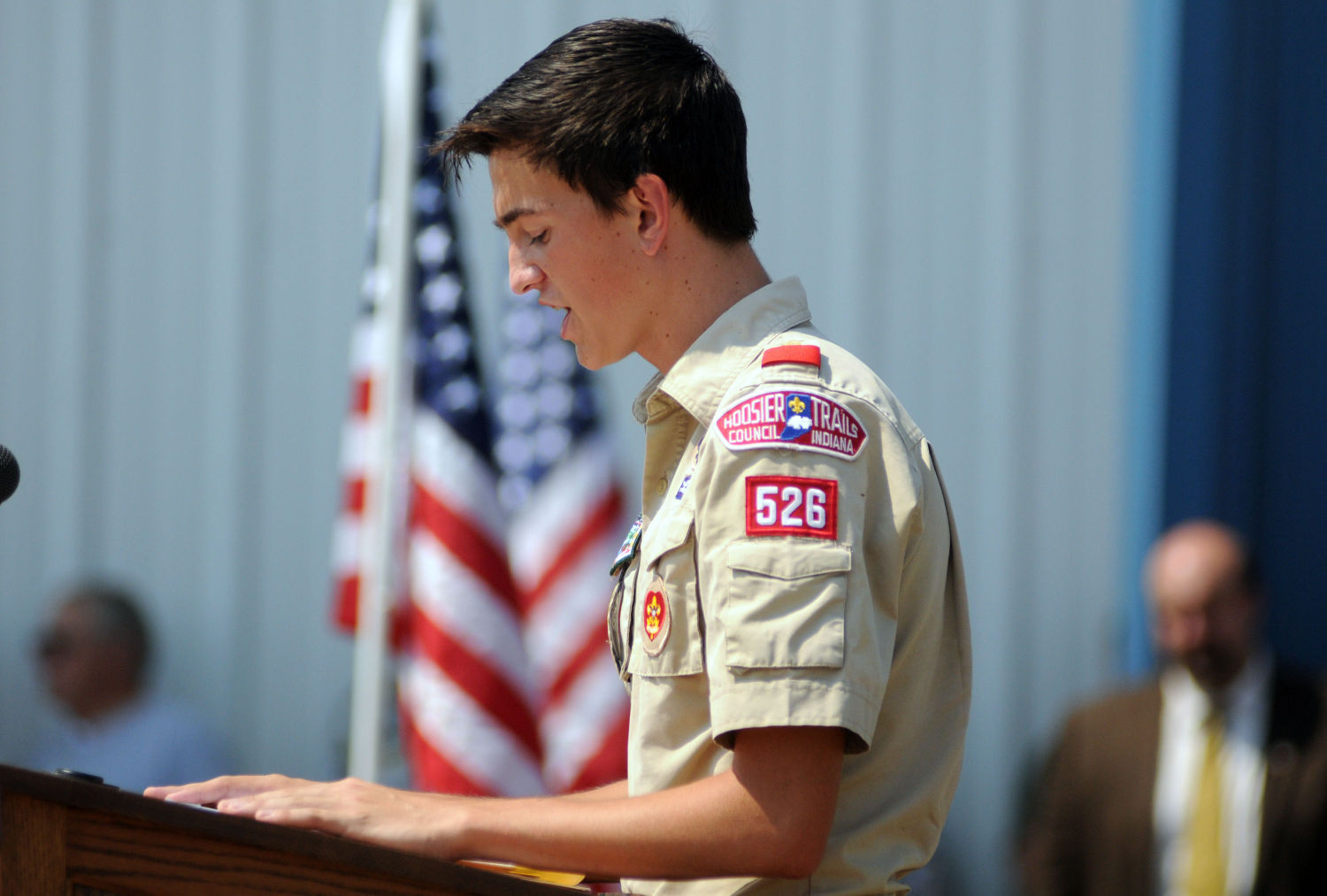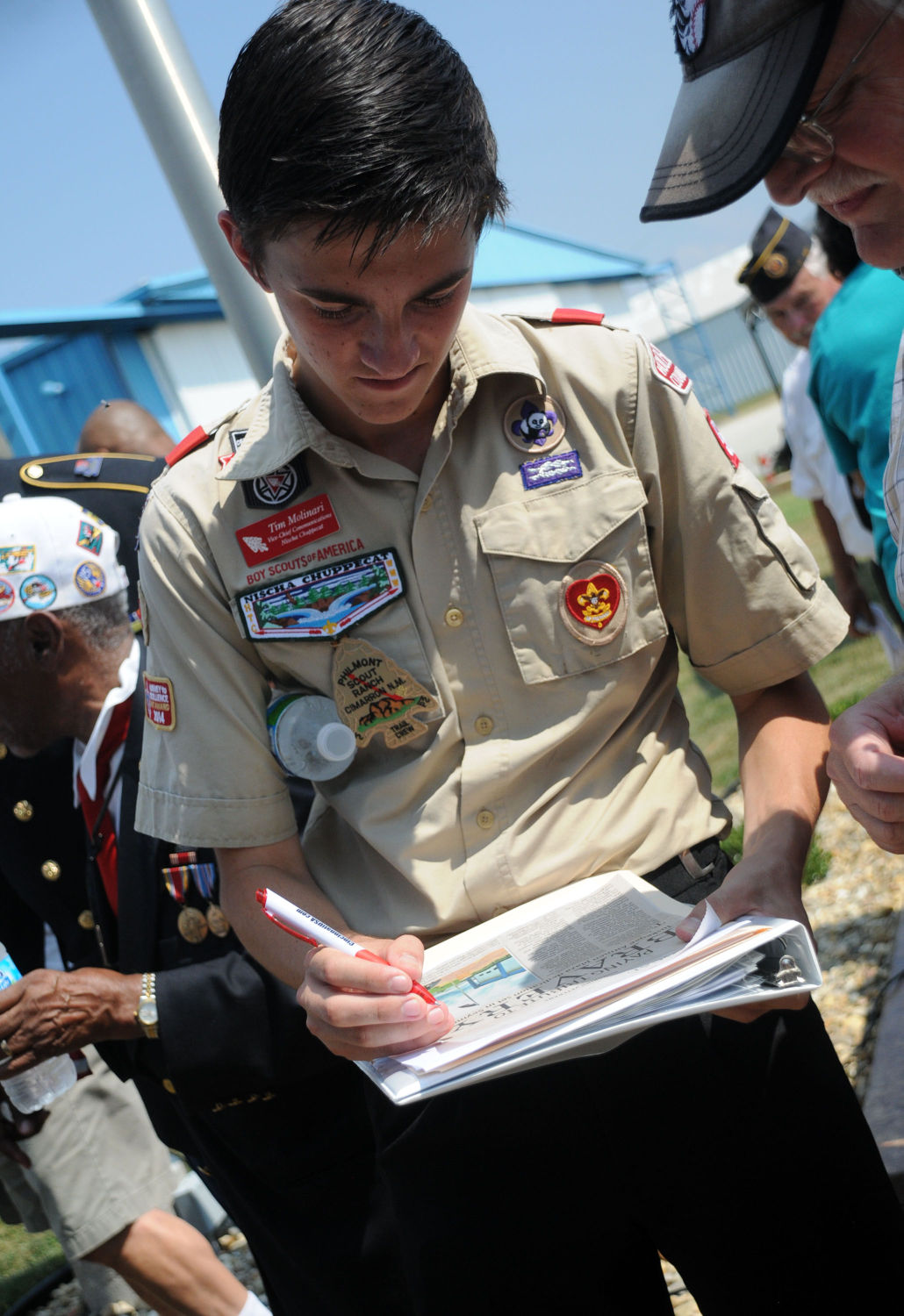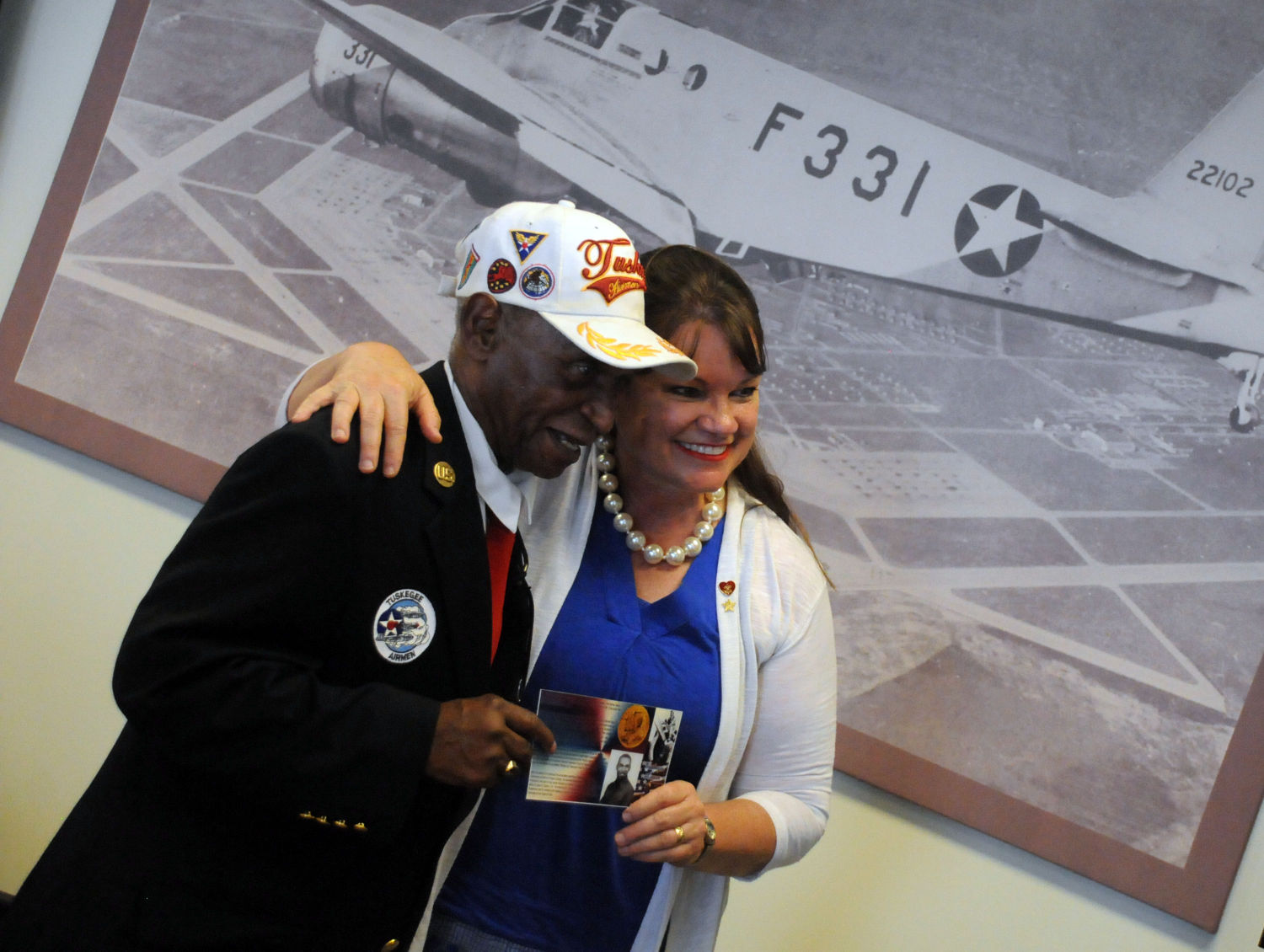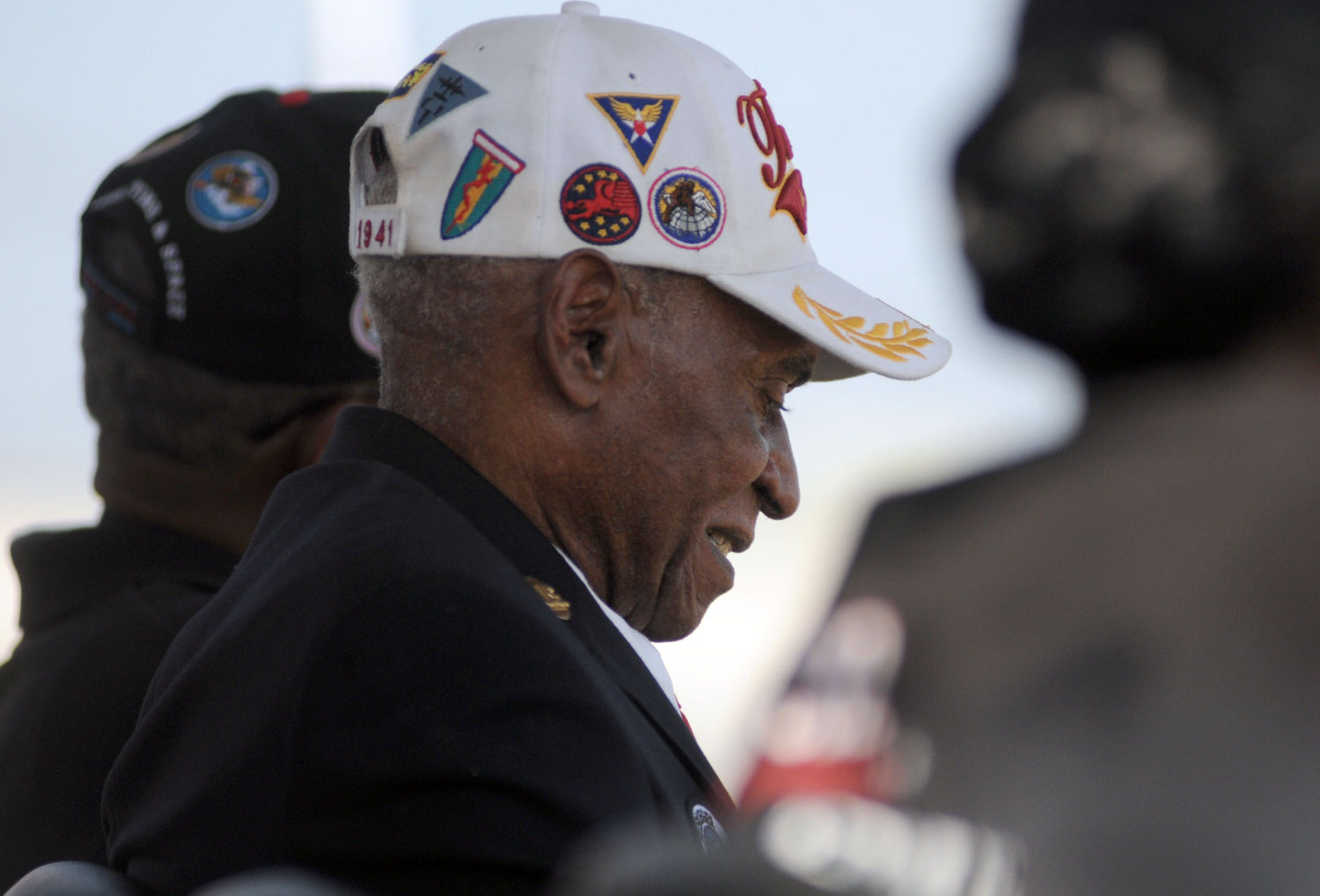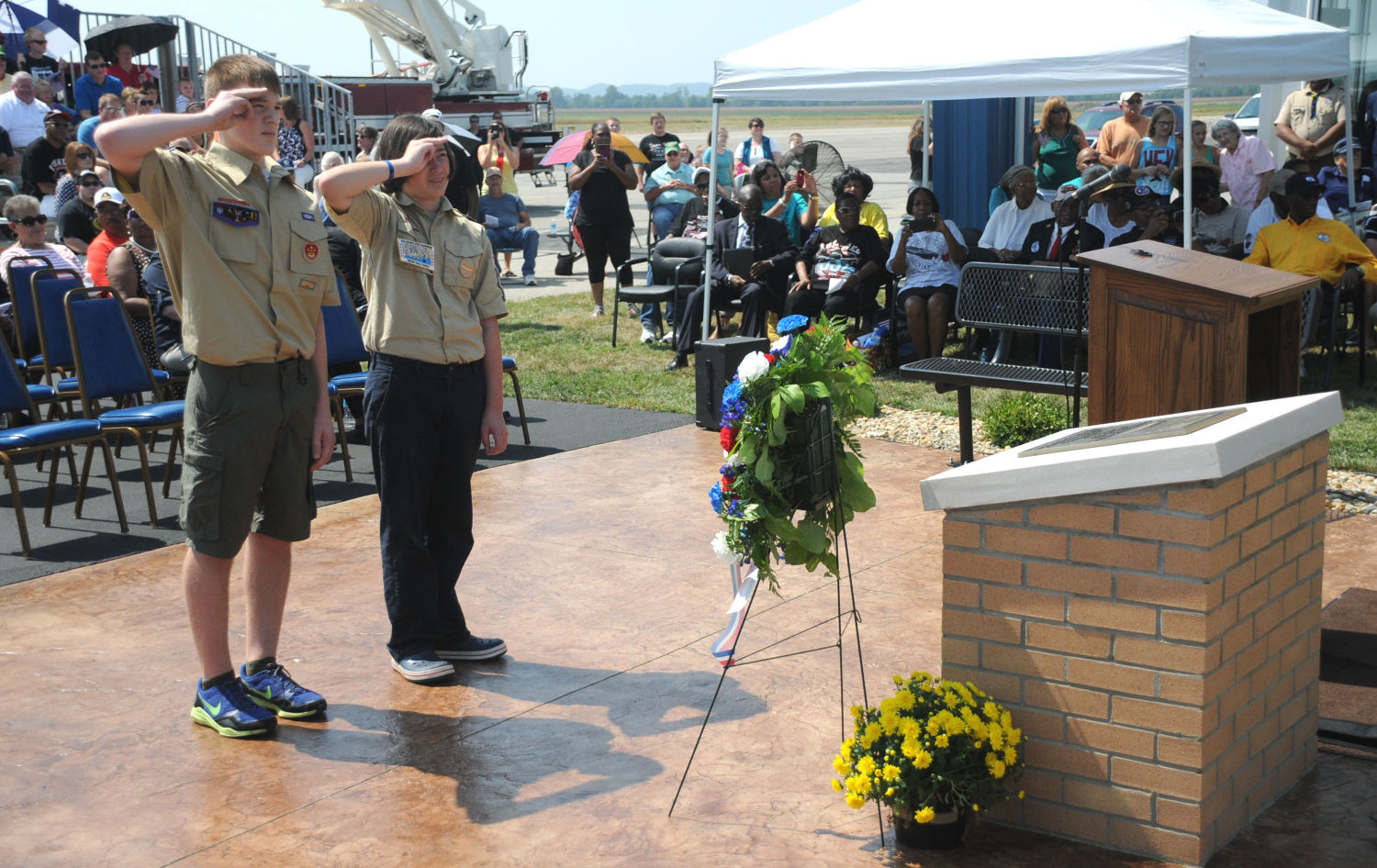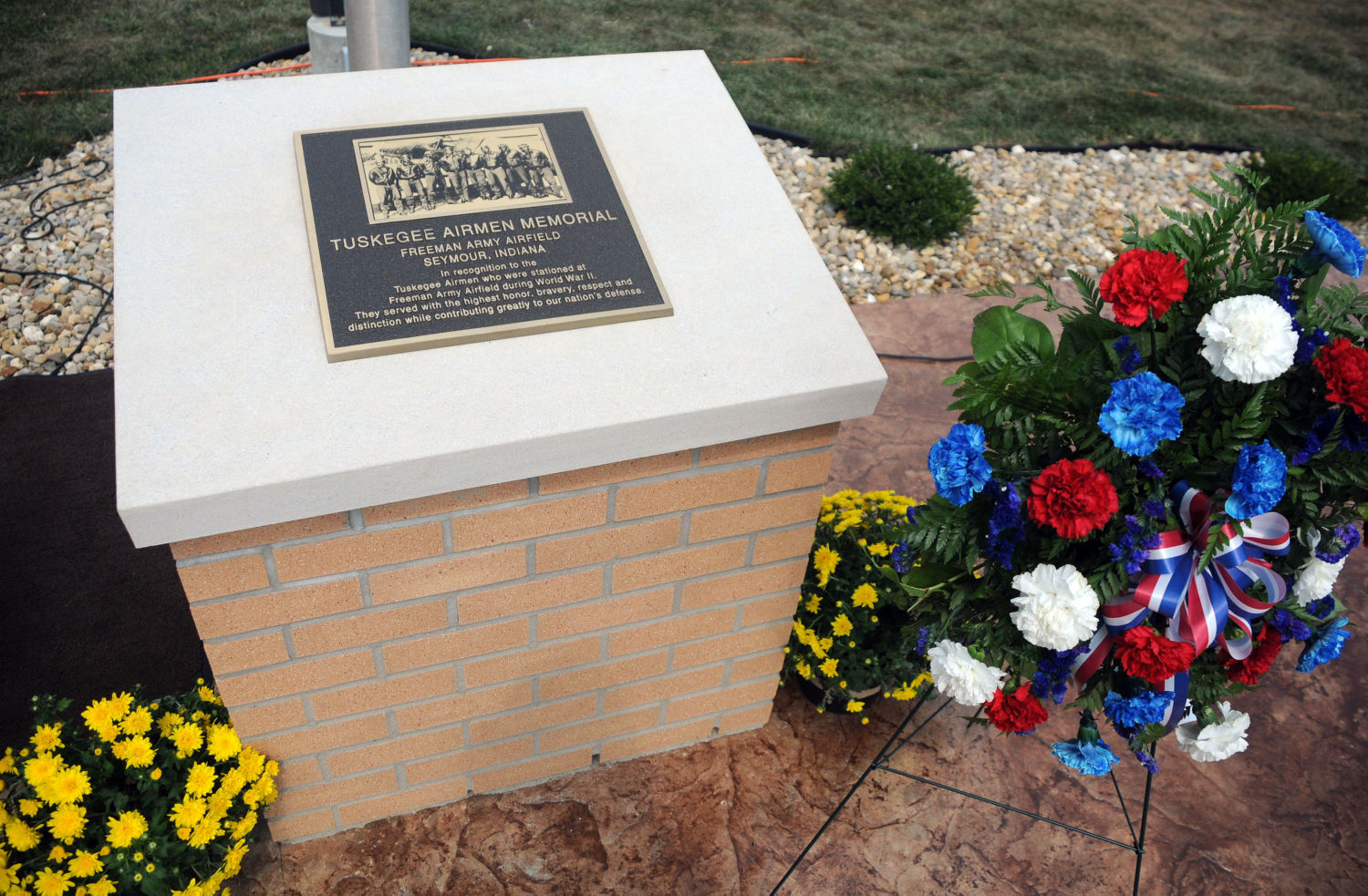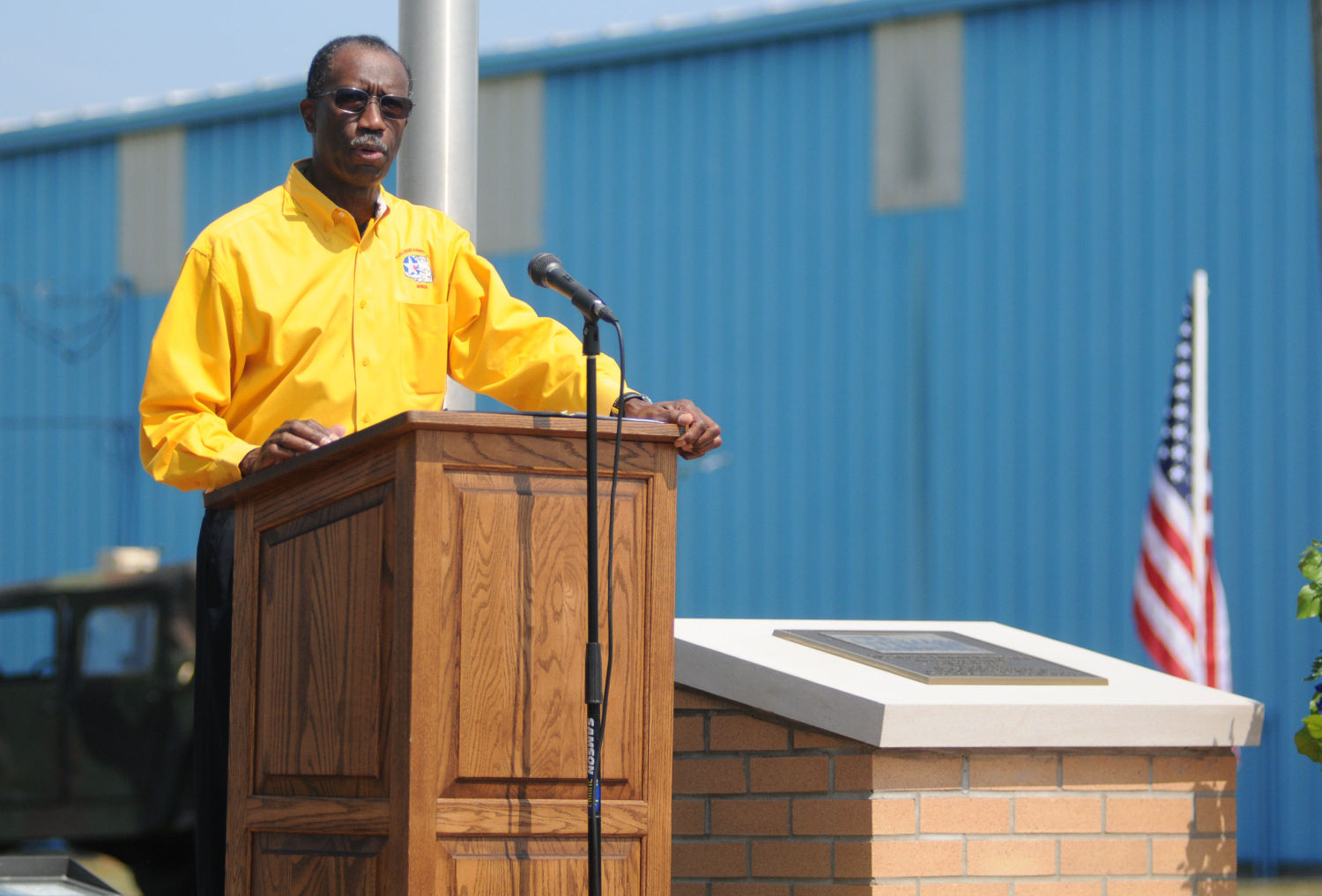Seventy years ago, Leslie Edwards witnessed African-American military officers at Freeman Army Airfield in Seymour get arrested after staging a nonviolent protest and standing up for equal rights.
During what came to be known as the Freeman Field Mutiny in April 1945, 120 of the more than 400 black officers in the 477th Bombardment Group were arrested because they attempted to integrate a club designated for white officers or refused to sign a document acknowledging separate facilities.
Edwards said it was disturbing because the courageous men who were willing to die for their country and whom he considered heroes were being treated like felons.
They were flown to Godman Army Airfield in Kentucky, where they were confined in a building with barbed-wire fencing around it and armed guards outside.
Three men accused of using force were court-martialed, and 104 received letters of reprimand.
In the summer of 1945, Edwards finally saw the men’s courageous act pay off. Following a trial, two of the court-martialed men were acquitted. Also, all of the white officers from the 477th were reassigned to other units and replaced with black officers.
It has been said the Freeman Field Mutiny was instrumental in President Harry Truman issuing Executive Order 991, which directed the desegregation of the U.S. military, in July 1948.
In 1995, the letters of reprimand were removed from the records of those who received them, and the man who was court-martialed and charged with assault saw his conviction overturned.
“That trial and that whole incident showed what gallant people, courageous people can accomplish when they are doing what they know is God’s way, the rightful way to do things with something they couldn’t back away from,” Edwards said.
On Sept. 6, 2015, Edwards saw the men’s efforts recognized once again when the Tuskegee Airmen Memorial Plaza was dedicated at Freeman Municipal Airport in Seymour. The memorial was the Eagle Scout project of Tim Molinari, a Seymour High School senior and member of Boy Scout Troop 526.
Edwards, who now lives in Cincinnati, presented Molinari with a plaque on behalf of the Greater Cincinnati chapter of Tuskegee Airmen Inc. to thank him for his work.
“Your performance, dedication to advancement and preservation of the legacy of the Tuskegee Airmen brings honor and inspiration benefiting yourself, your community, your state and this nation,” Edwards said while reading the plaque.
Molinari, who began working on the project two years ago, said he was happy to see 22 businesses, organizations and individuals contribute the nearly $3,200 it took to make the plaza a reality.
“The memorial is not simply to record history of what happened here, but for Freeman Army Airfield to be a historical focal point and a place for inspiration that inspires future generations of young Americans,” Molinari said during the dedication.
“What happened here changed the course of our nation’s history,” he said. “How honored those men who walked these grounds so long ago would be if they knew that 70 years later we would be honoring their sacrifices by our presence here today.”
Those young officers, strong in their beliefs but not knowing their fate, never would have known how far-reaching their actions would become, Molinari said.
“We honor the members of the 477th and all Tuskegee Airmen not only for their service to their country but for showing us that a few committed people guided by a divine God and a righteous moral compass can alter the course of history, achieve great things and make life better for others who follow,” he said.
The Community Foundation of Jackson County was among those funding the project, awarding a grant through the Jackson County Community Endowment Fund.
“The foundation and our grants committee eagerly partnered with Tim and others to ensure the project came to life,” said Dan Davis, the foundation’s president and CEO. “This memorial pays tribute to the Tuskegee Airmen’s battles against the Axis powers and against segregation here at home. It also honors the role that Freeman Army Airfield played in our history.”
Dale Sandlin, scoutmaster of Troop 526, said he was proud of Molinari for completing his Eagle Scout project.
“The good thing with Eagle Scout projects, it’s their project, so they come up with the dream, and you just go over the smart goals — is it specific, is it measurable and can you do it?” Sandlin said. “The answers he had to start with made it seem like there’s a chance he would get this done. Any time there is a chance that they can succeed, you’ve got to let them try it because, if you don’t, then they never really truly know what success is.”
Molinari is Sandlin’s 15th Eagle Scout, and he said this project is the most noted one.
“It’s just a wonderful thing,” Sandlin said. “What he did he was truly passionate for, and you could tell that by the time and energy and background research that he did for this. It’s a great thing. It’s a great day for Scouting and for Tim in particular.”
Also speaking at the ceremony were Seymour Mayor Craig Luedeman, who declared it Tuskegee Airmen Day in the city, and Leon Johnson, a retired brigadier general and national president of Tuskegee Airmen Inc.
Johnson said Tuskegee Airmen originated in the 1940s when a group of men enlisted in the U.S. Army Air Corps and became the nation’s first black military airmen.
Civil rights organizations and the black media exerted pressure that resulted in the formation of an African-American aviation training program in Tuskegee, Alabama, in 1941 that later became known as the Tuskegee Airmen.
More than 15,000 men and women in military and civilian capacities participated in or or supported the Tuskegee experience, Johnson said. The airmen served in all career fields to support flight operations during World War II.
From 1941 to 1946, 992 pilots graduated from the training program at Tuskegee Army Airfield, and 355 of them deployed overseas and saw combat in Europe. There were four bomber squadrons organized under the 477th, but the war ended before they deployed.
The 477th had been activated briefly in 1943 as a white bomb group, but when it was activated again at Selfridge Field in Michigan in January 1944, it was a predominantly black bomb group, receiving its pilots from the twin-engine training program at Tuskegee.
Robert Selway, a white officer, was the commander of the group for a year-and-a-half and was not popular with black officers since he attempted to enforce segregation on the bases where the group was stationed, Johnson said. At Freeman Army Airfield, he set up an officers club for whites and one for blacks.
During the Freeman Field Mutiny, Selway and the base commander ordered all black officers at Freeman Army Airfield to sign a new base regulation to acknowledge separate facilities on the base.
Johnson said coverage of the events in the black newspapers brought attention to the situation in Seymour. Master Sgt. Harold Beaulieu, a noncommissioned officer in charge of the photo lab, had rigged a hidden camera in a shoebox to take pictures and circulate them to the black media.
Once the military was desegregated, opportunities abounded for African-Americans. Of the men at Freeman Army Airfield, one became the first black four-star general in the American armed forces, one was elected the first African-American mayor of Detroit, one became the first black clerk of the Supreme Court and one became the second black man to be appointed to a president’s Cabinet.
The Tuskegee Airmen’s story also has been shared in the documentary “Double Victory.” The title of the film represents victory overseas in combat and the victory at home against prejudice and discrimination.
Tuskegee Airmen Inc. was formed to preserve the history of America’s first black military airmen and have them serve as role models to today’s youth and expose them to a variety of career opportunities.
In March, the 75th anniversary of the start of the Tuskegee experience will be celebrated during events across the country. That will culminate with the national convention July 13 to 16 in Indianapolis.
Tuskegee Airmen Inc.’s foundation also is raising money to establish a youth academy to increase exposure of youth to careers in aviation, aerospace science and technology.
[sc:pullout-title pullout-title=”If you go” ][sc:pullout-text-begin]
The Tuskegee Airmen Memorial Plaza is next to Freeman Municipal Airport’s terminal building at 1025 A Ave., Seymour.
It was built as an Eagle Scout project by Tim Molinari of Seymour with financial support from civic organizations, businesses and individuals.
[sc:pullout-text-end][sc:pullout-title pullout-title=”Pull Quote” ][sc:pullout-text-begin]
“That trial and that whole incident showed what gallant people, courageous people can accomplish when they are doing what they know is God’s way, the rightful way to do things with something they couldn’t back away from.”
Leslie Edwards, one of the original Tuskegee Airmen who served at Freeman Army Airfield
[sc:pullout-text-end][sc:pullout-title pullout-title=”On the Web” ][sc:pullout-text-begin]
For information about Tuskegee Airmen Inc., visit tuskegeeairmen.org.
[sc:pullout-text-end]

